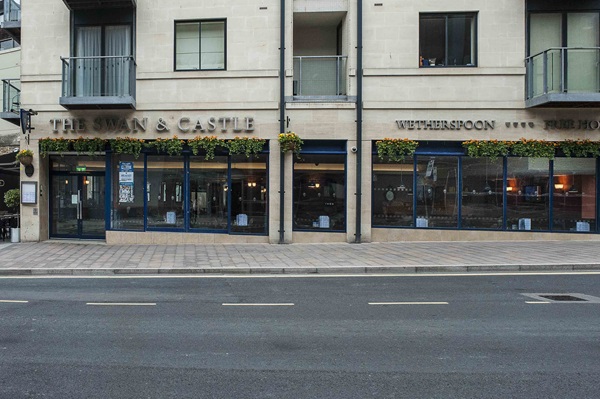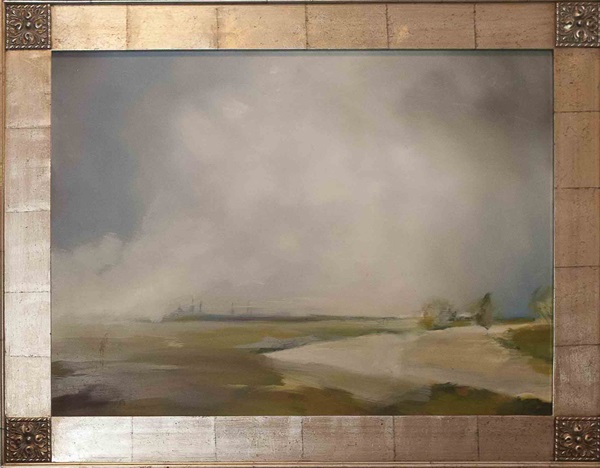Pub history
The Swan & Castle
This pub is named after a long-standing public house, demolished in 1968 to make way for the adjacent County Hall building. The Swan & Castle was built in 1896 on the site of The Swan (erected in 1806) which, itself, had replaced the even earlier Nag’s Head (recorded in 1667).
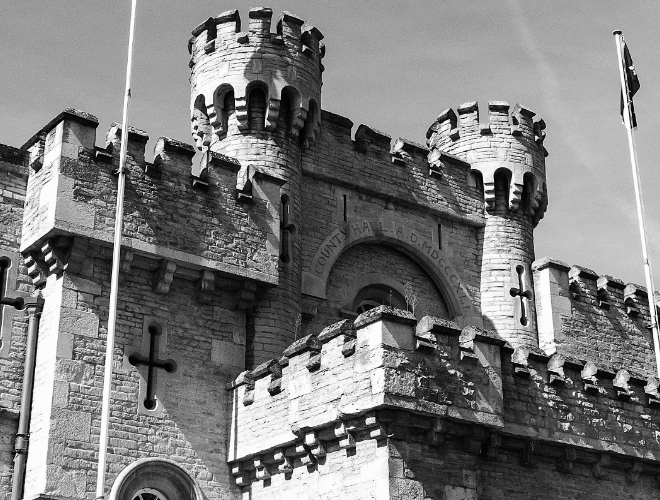
This pub is named after a long-standing public house, demolished in 1968 to make way for the adjacent County Hall building. The Swan & Castle was built in 1896 on the site of The Swan (erected in 1806) which, itself, had replaced the even earlier Nag’s Head (recorded in 1667).
A plaque documenting the history of The Swan & Castle
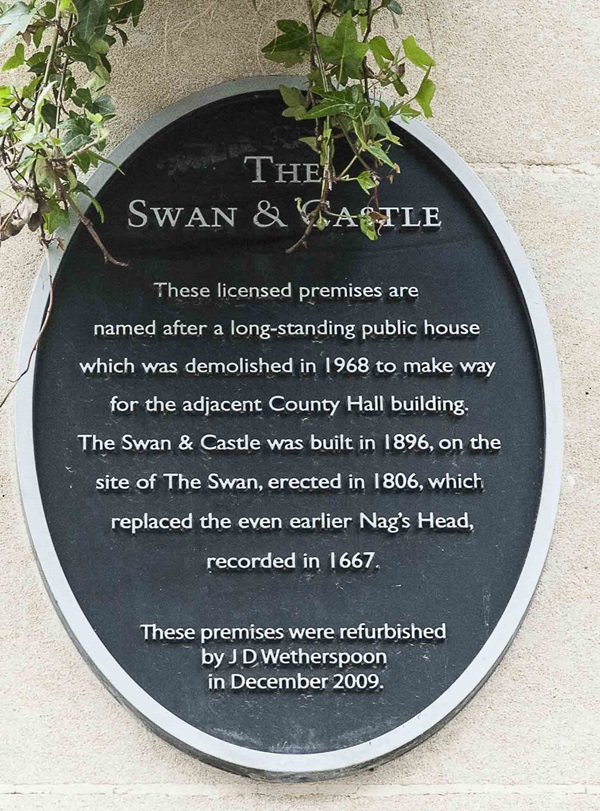
The text reads: These premises are named after a long-standing public house which was demolished in 1968 to make way for the adjacent County Hall building. The Swan & Castle was built in 1896, on the site of The Swan, erected in 1806, which replaced than even earlier Nag’s Head, recorded in 1667.
These premises were refurbished by J D Wetherspoon in December 2009.
Illustrations and text about The Swan & Castle
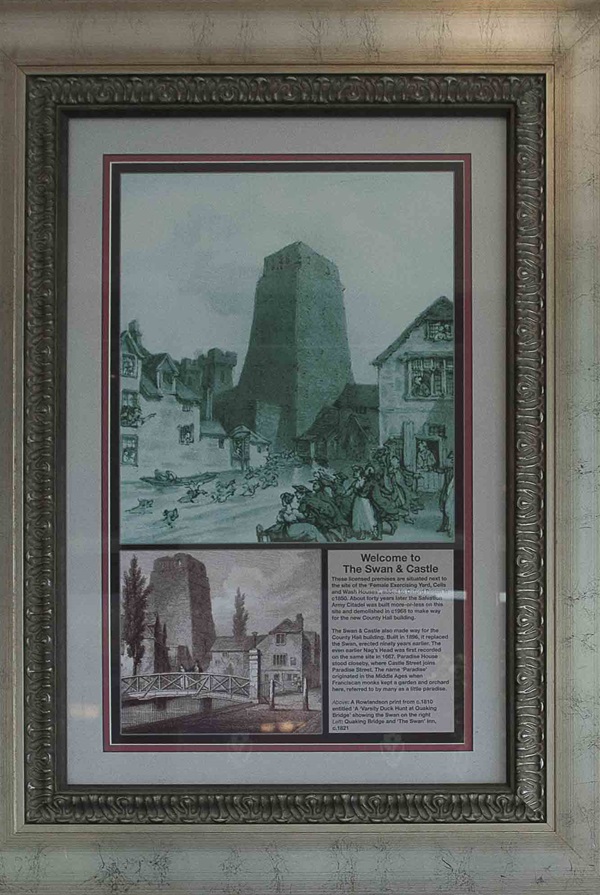
The text reads: These licensed premises are situated next to the site of the ‘Female Exercising Yard, Cells and Wash Houses’ added to Oxford prison in c1850. About 40 years later, the Salvation Army Citadel was built more-or-less on this site and demolished in c1968 to make way for the new County Hall building.
The Swan & Castle also made way for the County Hall building. Built in 1896, it replaced the Swan, erected 90 years earlier. The even earlier Nag’s Head was first recorded on the same site in 1667. Paradise House stood close by, where Castle Street joins Paradise Street. This name ‘Paradise’ originated in the Middle Ages when Franciscan monks kept a garden and orchard here, referred to by many as a little paradise.
Above: A Rowlandson print from c1810 entitled A Varsity Duck Hunt at Quaking Bridge, showing a swan on the right
Left: Quaking Bridge and The Swan Inn, c1821
A photograph of Castle Street, 1901
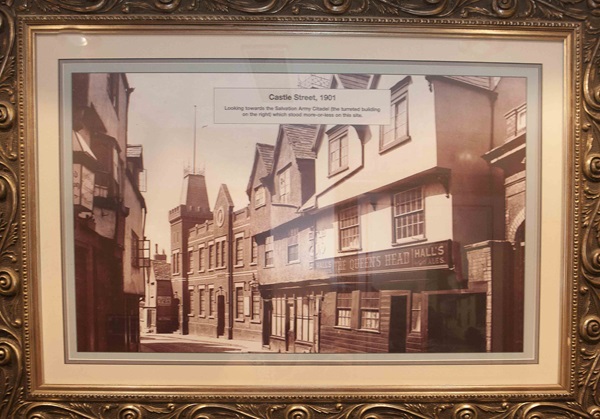
The text reads: Looking towards the Salvation Army Citadel (the turreted building on the right) which stood more-or-less on this site.
Illustrations of the Castle Mound
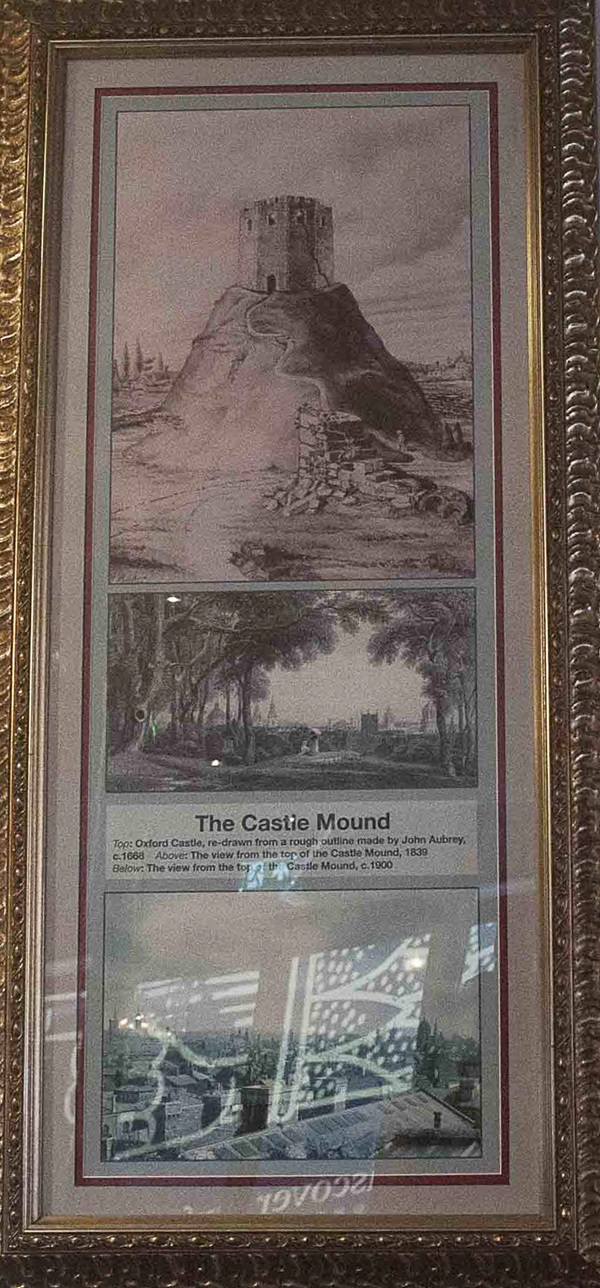
Top: Oxford Castle, redrawn from a rough outline made by John Aubrey, c1668
Above: The view from the top of the Castle Mound, 1839
Below: The view from the top of the castle mound, c1900
An oil painting entitled Long View, by Fiona Roberts
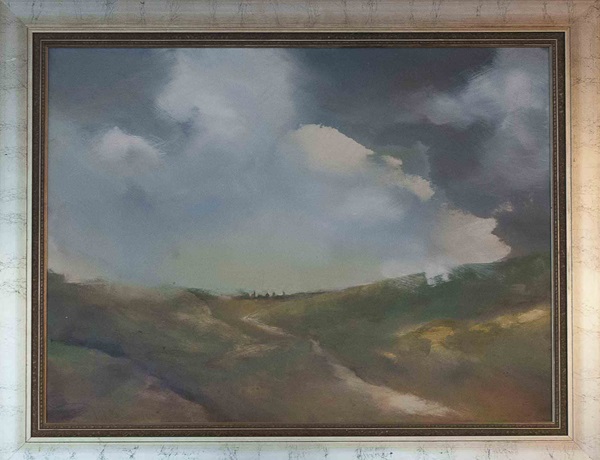
Fiona Roberts combines working as a senior event coordinator with painting professionally.
She paints landscapes using oils and damar resin which she mixes herself using a recipe favoured by the old master, lending a traditional element to these contemporary landscapes.
An oil painting entitled Thames View, by Fiona Roberts
An oil painting entitled Morning Mist and Oxford Castle, by Fiona Roberts
External photograph of the building – main entrance
